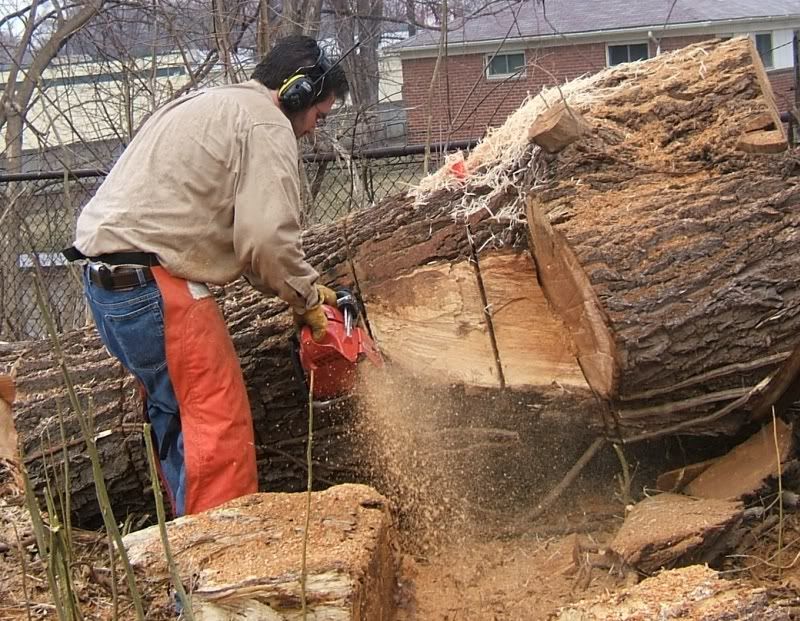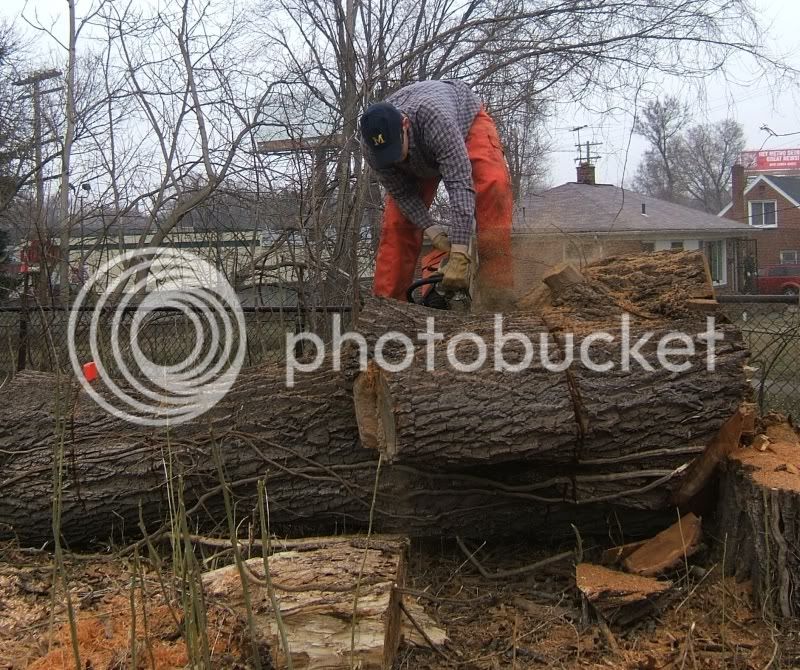cool pics, man
i guess since i'm still new to felling, i'd rather have a bar an inch or two
longer than the diameter so i have less of a chance of screwing up the face cut
Can't blame you. Here's what I would do in your situation:
A bit of background - I believe that everybody who uses saws on a regular basis, whether a home firewood cutter or an occasional hired saw, needs three saws. He may need more and he may want more, but he definitely needs three: a 30-40cc trimmer saw (or top-handle, if you climb), a 50cc saw, and a 70cc+ big saw. This three-saw combination will allow each tool to be used where its strengths are best matched to the task at hand, and will keep from asking a tool to do something that it isn't good at. The result will be that the user and the equipment will be happier, safer, and more efficient.
You already have a 30-40cc saw with your MS210. I would go next for a big saw, since you have work lined up that requires one; you can add the mid-sized saw at some future point when it becomes necessary or helpful. For your curent task I'd probably go with a 440 and buy two bars for it - an "everyday" bar and a "long" bar. 18" or 20" would be a good "everyday" bar length, as it is fairly light and nimble. A 24" or 28" bar would be appropriate as a "long" bar for that saw; you will want to run skip chain on those lengths, though. In combination you will be able to get more use out of the saw than just having a "long" bar.
I'd skip the 385 in favor of the lighter and more nimble MS440, since I suspect that this will end up being an all-around, multi-purpose saw for ya.
EDIT: You should also get yourself a copy of two books, if you don't have them already:
1. Professional Timber Falling, by Douglas Dent
2. The Fundamentals of General Tree Work, by Gerald Beranek
They'll cost you about $50, but you'll easily make the money back by being a safer, more efficient, and wiser cutter. Reading these books speed up the learning curve and save you having to learn by trial and (costly) error.




























































